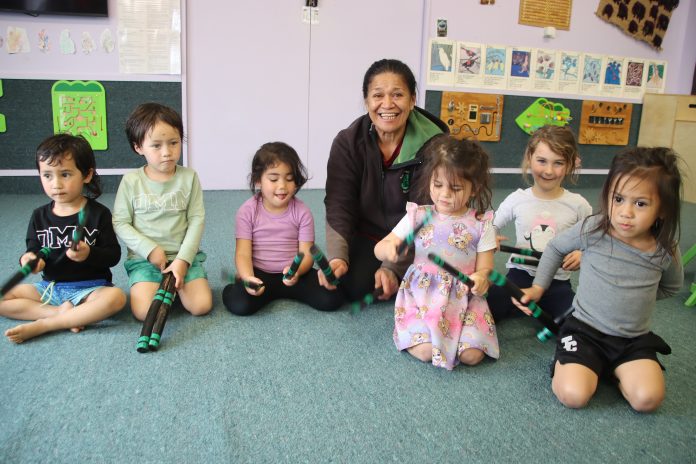
This week Aotearoa/New Zealand celebrates Te Wiki o Te Reo Māori.
The Ensign reporter Sandy Eggleston chats to Mataura’s Kia Ngawari Te Kōhanga Reo kaiako Trish Emia about her journey from not speaking the language much as a child to being a passionate advocate and teacher of te reo Māori.
Celebrating Te Wiki o Te Reo Māori makes ‘‘our heart sing’’, whaea Trish Emia says.
Ms Emia, of Ngāti Kahungunu/Taranaki descent, has been teaching at the Kia Ngawari Te Kōhanga Reo for about four years.
Given what had happened in history it was wonderful to be able to celebrate the week, Ms Emia said.
‘‘The spotlight this week is shone on our language to be spoken, to be celebrated.’’
It was not until she became a mother and part of a group to start a kōhanga reo that she started speaking the language.
She picked it up without too much trouble.
‘‘Everything our eyes see, everything our ears hear, is stored back there somewhere.’’
Her father was the kaumatua of the kōhanga and her mother Patricia the chairwoman of the organising committee.
Before coming to Mataura in 2019, she was working in the bilingual unit at the Mercury Bay Area School, Whitianga.
She had planned a two-month visit to look after her mokopuna.
After she had been in the town for two weeks she decided to visit the kōhanga.
She was made to feel very welcome by kaiako matua (senior teacher) Ami Rarere.
‘‘I came every day.
‘‘I loved it because my moko were around [te reo Māori] again.’’
When Mrs Rarere offered her work she did not know what to do.
She had a chat to her mentor, the former Māori Language Commissioner Sir Timoti Karetu.
‘‘He’s a stalwart of our reo.’’
He advised her to stay and find a place where her expertise could be used.
Now as well as teaching at the kōhanga, she also teaches te reo to teachers in the Lower Mataura Valley Community of Learning Kahui Ako.
Sometimes fear was an obstacle to people learning the language.
‘‘Everyone has the fear of saying it wrong and getting growled.’’
However, she believed it was important to support people when they stepped out of their comfort zone.
‘‘If you are not going to come from a place of aroha then what are you doing?’’
She believed it was not only vital to have a strategy to increase the use and standard of Māori language speaking but to act.
‘‘We can’t complain and walk away.’’
In 1903 education authorities discouraged the speaking of Māori in schools and for nearly 70 years this continued, she said.
In 1972 a petition was presented to Parliament requesting the language be taught in schools and in 1975 the first Māori language day was marked.
‘‘Some of these dates I have in my head because they are just huge milestones.’’
Many whānau she knew spent the week only speaking Māori.
‘‘For that whole week they don’t speak any English just to revitalise [Māori].’’
While Māori should be spoken every day at least the government was now in support of the revitalising of te reo, she said.
‘‘If we go back to 1972, I can tell you we’ve gone a long way baby, but we’ve got many more miles to go.’’
Although she grew up in Hawke’s Bay hearing Māori spoken by her father Ivan and her aunts, she did not use it much.
‘‘I didn’t value what was around me.
‘‘I’m a kid at the marae and I just want to go and play with the other kids.’’




